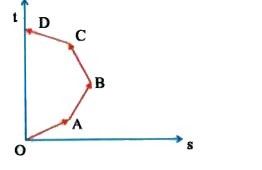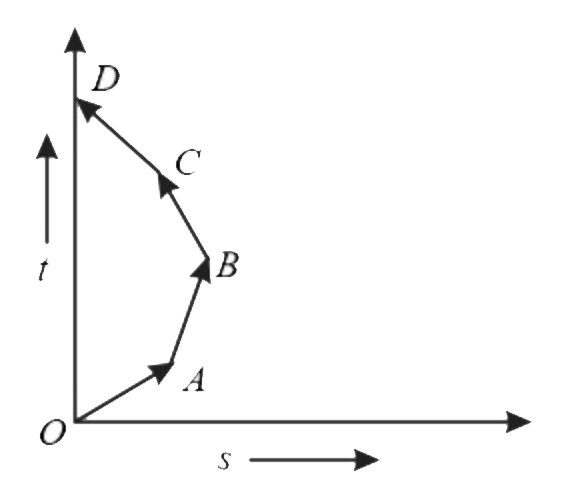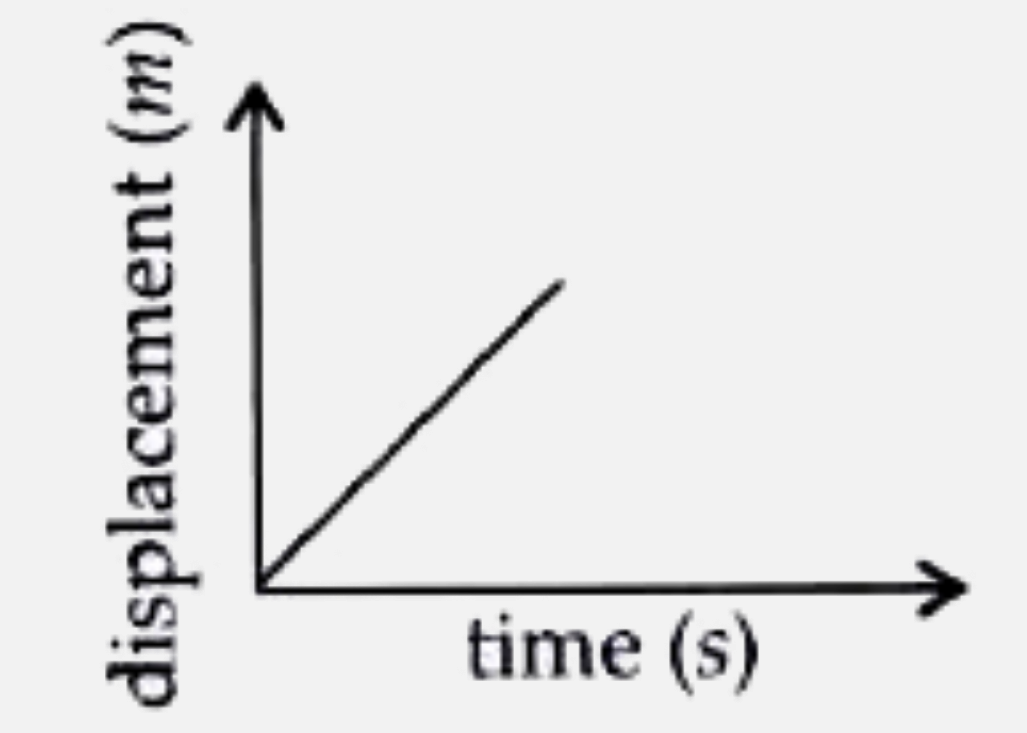Which of the following option is correct for havin a straight line motion represented by displacement - time graph.

A
The object moves with constantly increasing velocity from O to A then it moves with constant velocity
B
Velocity of the object increases uniformly
C
Average velocity is zero.
D
The graph shown is impossible.
Text Solution
The correct Answer is:C
|
Updated on:21/07/2023
Similar Questions
Knowledge Check
- Question 1 - Select One
Which of the following options is correct for the object having a straight line motion represented by the following graph ?
 AThe object moves with constantly increasing velocity from O to A and then its moves with constant velocityBVelocity of the object increases uniformlyCAverage velocity is zeroDThe graph shown is impossible
AThe object moves with constantly increasing velocity from O to A and then its moves with constant velocityBVelocity of the object increases uniformlyCAverage velocity is zeroDThe graph shown is impossible - Question 2 - Select One

Which of the following option is correct for the object having a staright line motion represented by the following graph?AThe object moves with constantly increasing velocity from O to A and then it moves with constant velocity.Bvelocity of the object increases uniformlyCaverage velocity is zeroDthe graph shoen is impossible - Question 3 - Select One
Which of the following statements is not correct regarding the motion of a particle in a straight line?
Ax-t graph is a parabola, if motion is uniformly accelerated.Bv-t is a straight line inclined to the time-axis, if motion is uniformly accelerated.Cx-t graph is a straight line inclined to the time axis if motion is uniform and acceleration is zero.Dv-t graph is a parabola if motion is uniform and acceleration is zero.
Which of the following velocity-time graphs represent uniform motion
View SolutionThe motion of a body is represented by the following displacement-time graph.

State the type of motion represented in the graph.View SolutionWhich of the following statements is not correct regarding the motion of a particle in a straight line?
View SolutionWhich of the following velocity-time graphs (v−tgraph) represent uniform motion
View SolutionWhich of the following represents distance(s)-time(t) graph for a retarded motion?
View Solution

